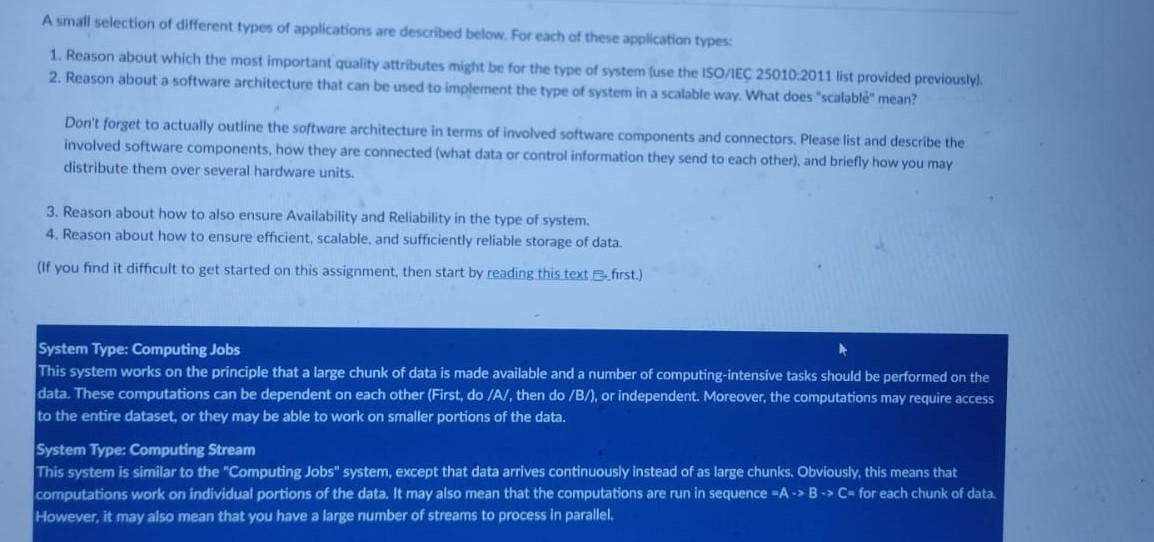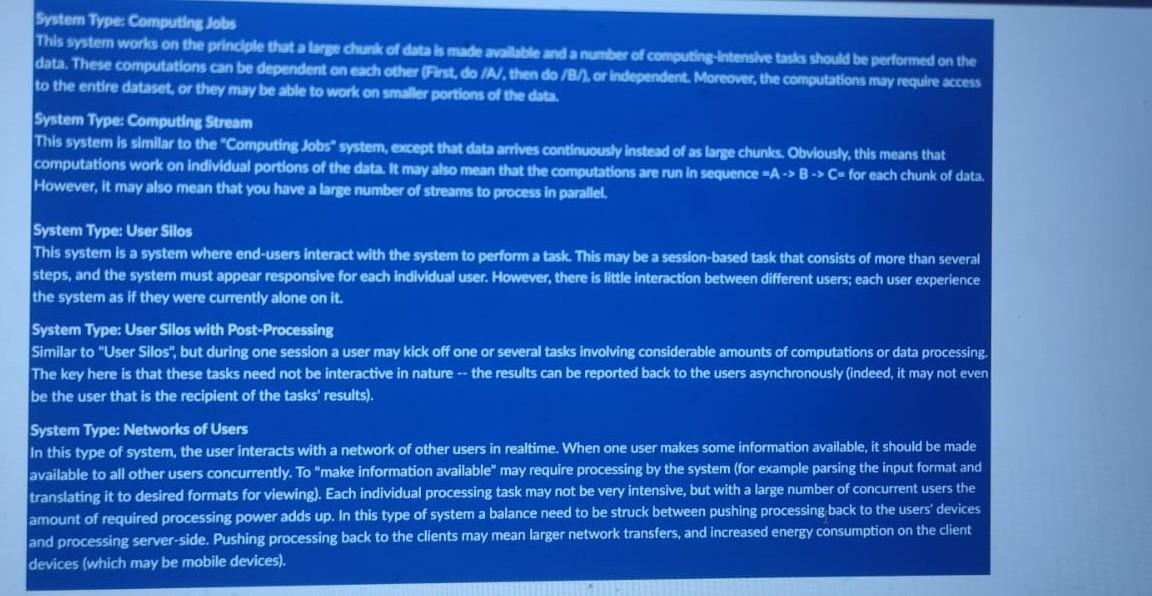

A small selection of different types of applications are described below. For each of these application types: 1. Reason about which the most important quality attributes might be for the type of system fuse the ISO/IEC 25010:2011 list provided previously). 2. Reason about a software architecture that can be used to implement the type of system in a scalable way. What does "scalable" mean? Don't forget to actually outline the software architecture in terms of involved software components and connectors. Please list and describe the involved software components, how they are connected (what data or control information they send to each other), and briefly how you may distribute them over several hardware units. 3. Reason about how to also ensure Availability and Reliability in the type of system. 4. Reason about how to ensure efficient, scalable, and sufficiently reliable storage of data. (If you find it difficult to get started on this assignment, then start by reading this text e first.) System Type: Computing Jobs This system works on the princlple that a large chunk of data h mude a valuble and a number of compotingthtensive tasks should be performed on the data. These computations can be dependent on each other fFirst, do / A, then do /B/, or independent. Moreover, the computations may require access to the entire dataset, or they may be able to work on smaller portions of the data. System Type: Computing Stream This system is similar to the "Computing Jobs" system, except that data arrives continuously instead of as large chunks: Obviously, this means that computations work on individual portions of the data. It may also mean that the computations are run in sequence =ABC= for each chunk of data. However, it may also mean that you have a large number of streams to process in parallel. System Type: User Silos This system is a system where end-users interact with the system to perform a task. This may be a session-based task that consists of more than several steps, and the system must appear responsive for each individual user. However, there is little interaction between different users; each user experience the system as if they were currently alone on it. System Type: User Sllos with Post-Processing Similar to "User Silos", but during one session a user may kick off one or several tasks involving considerable amounts of computations or data processing. The key here is that these tasks need not be interactive in nature - the results can be reported back to the users asynchronously (indeed, it may not even be the user that is the recipient of the tasks' results). System Type: Networks of Users In this type of system, the user interacts with a network of other users in realtime. When one user makes some information available, it should be made available to all other users concurrently. To "make information available" may require processing by the system (for example parsing the input format and translating it to desired formats for viewing). Each individual processing task may not be very intensive, but with a large number of concurrent users the amount of required processing power adds up. In this type of system a balance need to be struck between pushing processing back to the users' devices and processing server-side. Pushing processing back to the clients may mean larger network transfers, and increased energy consumption on the client devices (which may be mobile devices)








